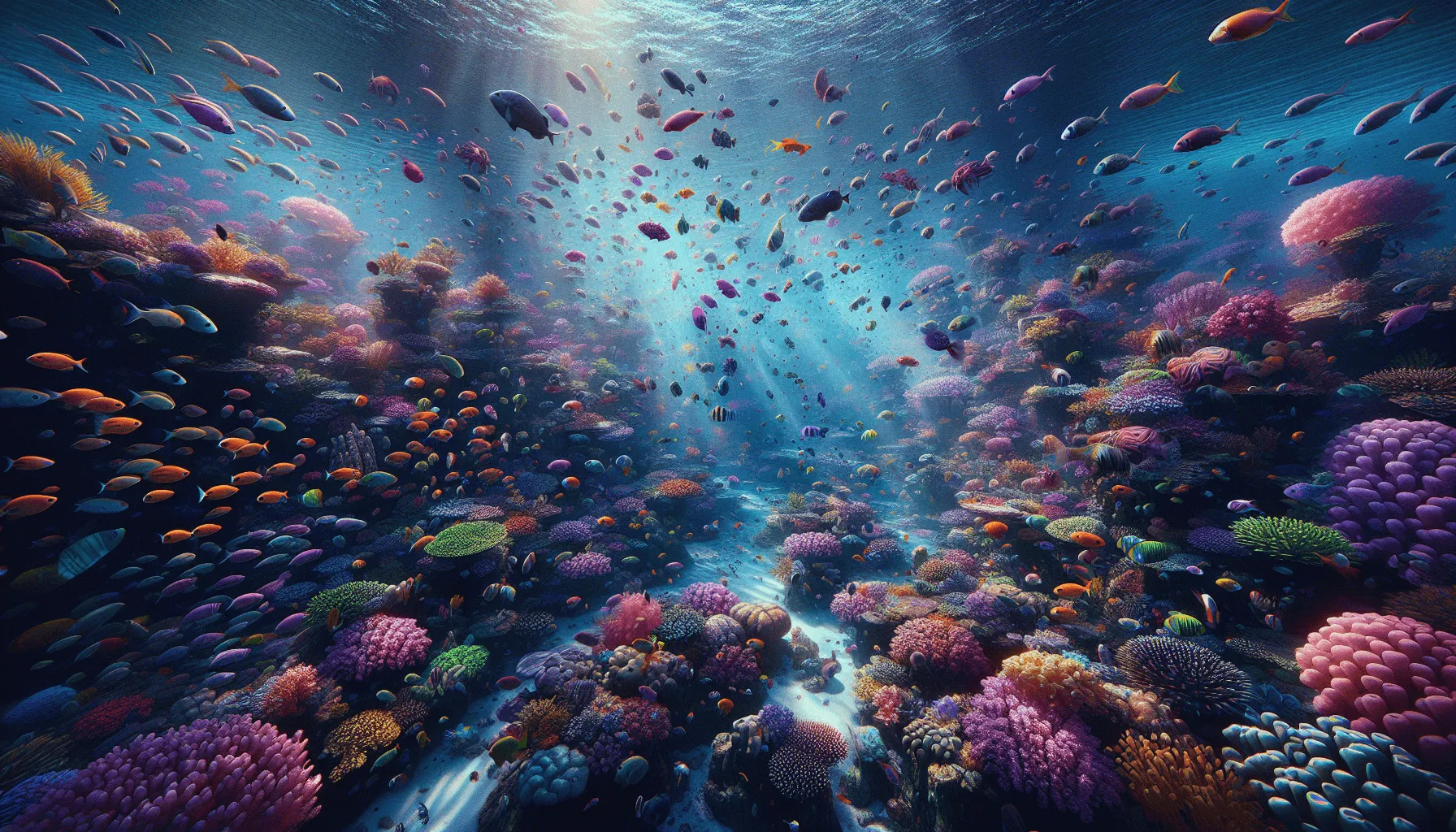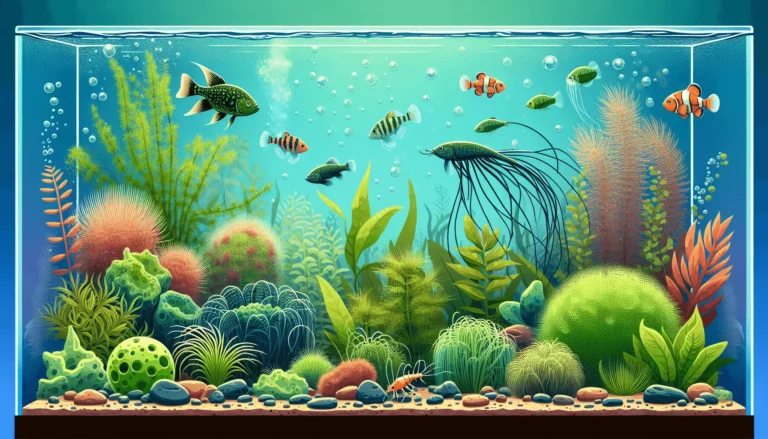Understanding the Fascinating World of Fish Groups
When you think about marine life, you might often picture a school of fish gliding gracefully through the ocean. But did you know that these groups have specific names that reveal much about their behavior and organization? This article focuses on the intriguing terminology used to describe groups of fish and why it’s crucial for understanding marine ecosystems.
What is a group of fish called? You may have heard terms like school or shoal. While both refer to assemblies of fish, they differ in subtle yet significant ways. A school typically consists of fish from the same species swimming in a synchronized manner. In contrast, a shoal can include fish from various species and tends to be less organized.
This exploration will guide you through:
- The distinctions between schools and shoals.
- Reasons behind fish forming these groups, such as protection and communication.
- Unique collective nouns for different species, like a shiver of sharks or a battery of barracudas.
- Insights into fish behavior and the science behind their physical adaptations.
Understanding these terms not only enriches your knowledge but also deepens your appreciation for the diversity and complexity of marine life.
The Terminology: School vs. Shoal
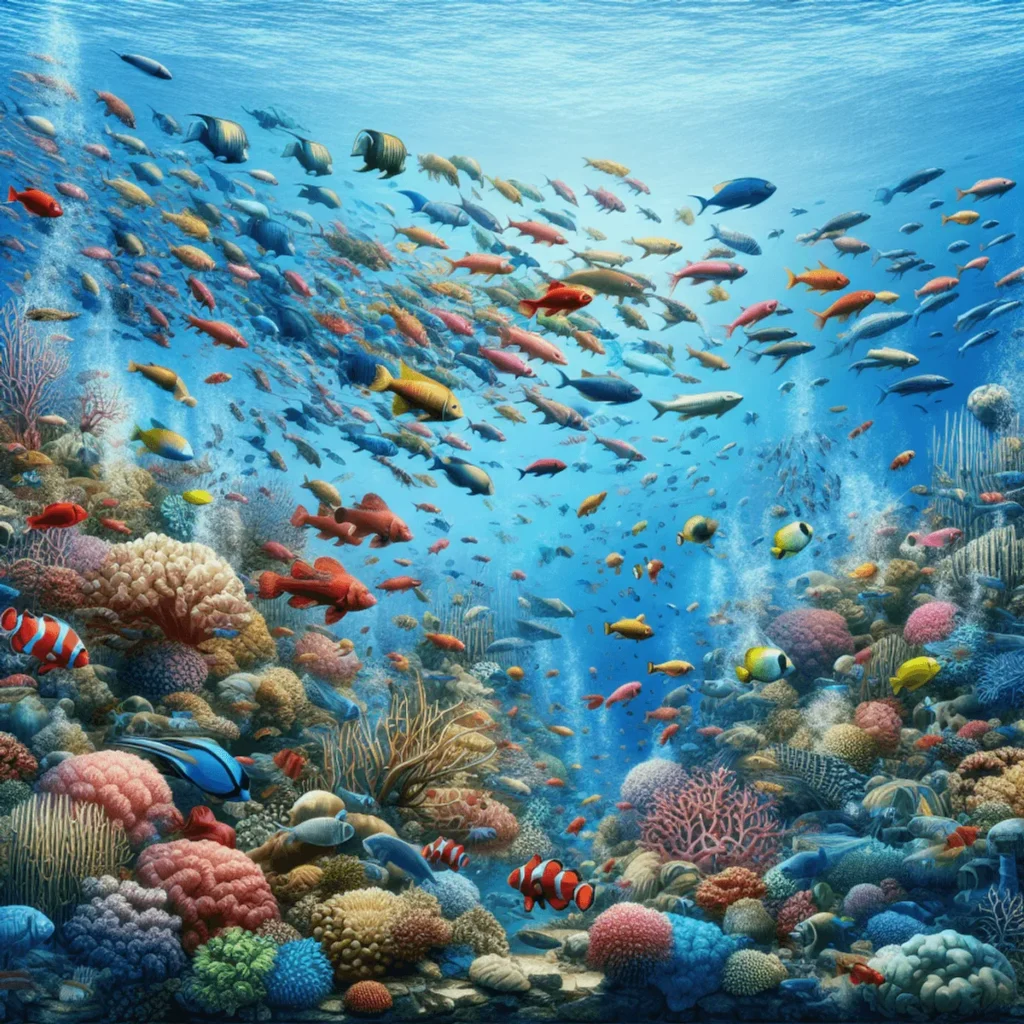
When we talk about a group of fish, it’s important to know the difference between two main terms: school and shoal. Both mean groups of fish, but they have their own unique features.
School:
School refers to a group of fish of the same species swimming in a synchronized manner.
- Fish in schools move together in perfect harmony, like a well-rehearsed dance routine.
- This coordination creates the illusion of a larger entity, making it harder for predators to single out individual fish.
- Schools are often seen in species like herring and sardines, who rely on this strategy to protect themselves from dolphins and sharks.
Shoal:
Shoal describes a more loosely organized group of fish that may or may not belong to the same species.
- Fish in shoals don’t swim with the same precision as those in schools.
- They may move at different speeds or even in different directions.
- Shoals can form for various reasons such as feeding, mating, or simply being in proximity.
- Mixed-species gatherings around coral reefs are common examples of shoals where different types of fish come together.
Understanding these distinctions enhances your appreciation for the complex social structures within marine ecosystems.
Why Fish Form Groups: Protection, Communication, and More
Fish behavior in groups is fascinating and complex. One primary reason fish form schools or shoals is protection against predators. By swimming together, fish create a visual illusion of a larger organism, making it difficult for predators to single out individual prey. This collective movement can be a lifesaver in the wild.
Synchronized swimming offers several benefits:
- Enhanced Communication: Moving in unison allows fish to communicate more effectively. Subtle changes in direction or speed can signal the presence of food or danger.
- Finding Food: Schools can cover a larger area when searching for food. This increases the chances of discovering food sources that might be missed by solitary fish.
- Energy Efficiency: Swimming in a group can reduce water resistance for individual fish, allowing them to conserve energy during long migrations or daily activities.
The social structure within these groups also plays a crucial role. Fish rely on visual cues and lateral line systems to maintain their positions within the school or shoal. This coordination is key to their survival, highlighting the intricate balance between individual actions and group dynamics.
Interestingly, these group behaviors not only aid individual fish but also contribute to broader ecological goals. For instance, understanding these social structures could help researchers leverage hungry fish to conserve coral reefs by promoting healthier marine ecosystems through better management practices.
Moreover, studying how fish adapt and thrive in their natural habitats reveals insights into their resilience and survival strategies. This knowledge is essential for developing effective conservation measures that ensure the sustainability of marine life amidst changing environmental conditions.
Diversity in Marine Life: Unique Collective Nouns for Different Species
In the rich tapestry of marine life, different species of fish are often identified using unique collective nouns that reflect their specific behaviors and characteristics. These terms not only add color to our understanding but also provide insights into the social dynamics of various marine creatures.
Some fascinating examples include:
- Shiver: A group of sharks is aptly called a shiver. This term evokes the sense of fear and awe that these apex predators often inspire.
- Battery: Barracudas, known for their fierce hunting skills, gather in a battery. This name highlights their powerful and aggressive nature.
- Shoal: Shoal refers to any group of fish swimming together, regardless of species. It emphasizes the collective movement rather than specific characteristics.
- School: When fish of the same species swim in unison, they form a school. This term underscores the synchronized and highly coordinated behavior typical in such groups.
These collective nouns are more than just interesting terminology. They offer a glimpse into how different species interact with their environment and each other. For example, a “shiver” of sharks might patrol an area together, leveraging their numbers for efficient hunting. A “battery” of barracudas could indicate a powerful force ready to strike at prey.
Understanding these unique names enriches our appreciation for marine biodiversity and emphasizes the importance of terminology in capturing the essence of species-specific behaviors.
Understanding Fish Behavior in Schools and Shoals: A Closer Look at Species Differences
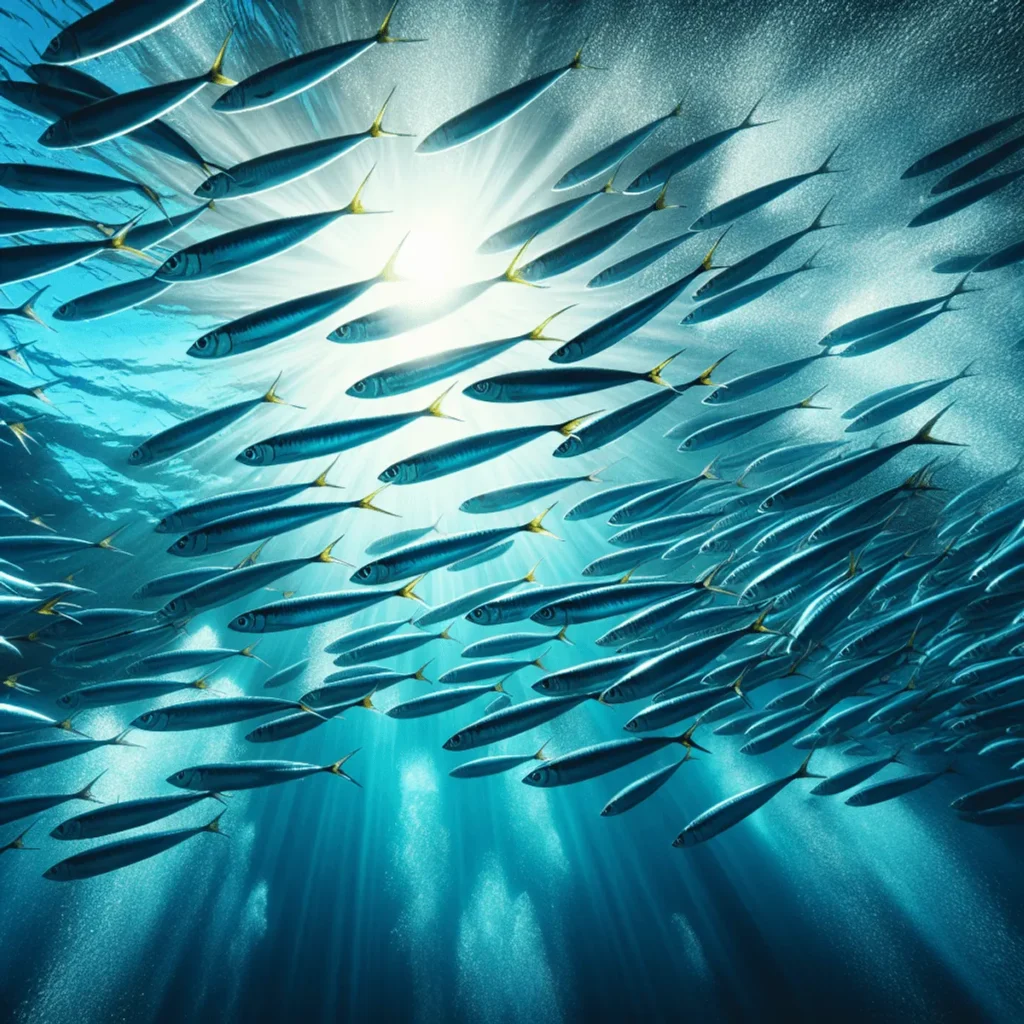
Learning about different types of fish reveals fascinating variations in social behaviors. Schooling fish, such as sardines and herring, exhibit highly synchronized swimming patterns. This unity creates a cohesive group that moves as one entity, enhancing protection and efficiency in navigating their environment.
Key insights into schooling behavior:
- Synchronized Movement: Fish in schools often swim side-by-side in the same direction, maintaining a consistent distance from each other.
- Collective Decision-Making: Schools rely on rapid communication through visual and sensory cues to make instantaneous decisions about direction changes or predator evasion.
In contrast, species that form shoals, like many reef fish and certain freshwater species, tend to display more loosely organized groupings. These groups may include different species that come together primarily for social interaction or feeding.
Distinct behaviors between schools and shoals:
- Flexibility vs. Rigidity: Shoaling fish exhibit more flexible movement patterns compared to the rigid formations seen in schooling species.
- Diverse Membership: Shoals can consist of mixed-species groups, leading to varied interactions and behaviors within the group.
Understanding these differences in fish behavior enhances our appreciation of marine life complexity. It highlights how various species adapt their social structures to thrive in diverse aquatic environments.
The Science Behind Schooling Fish: Physical Adaptations and Social Structures at Play
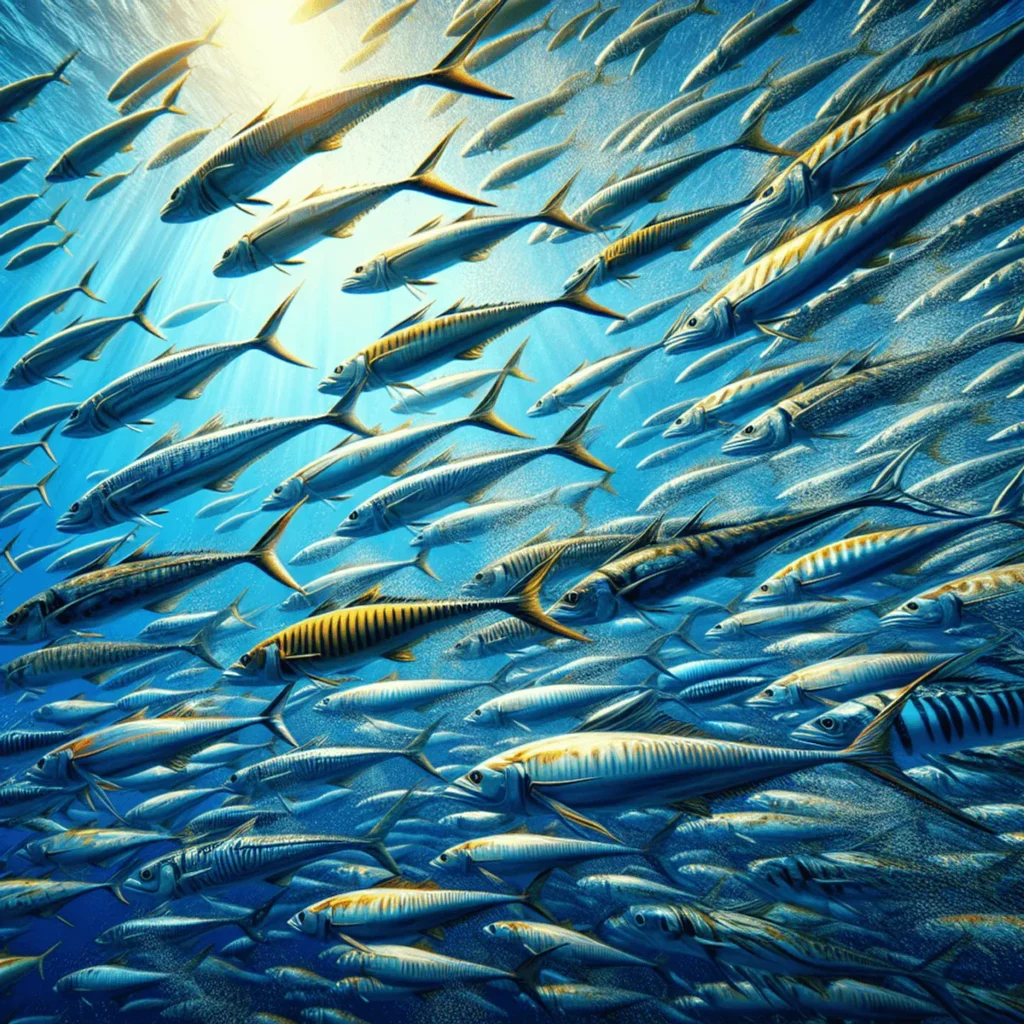
Streamlined bodies play a crucial role in the ability of fish to form schools. These physical adaptations minimize water resistance, allowing fish to swim efficiently and maintain synchronized movements. Species like tuna and mackerel exhibit such streamlined forms, enabling them to move swiftly and cohesively. Interestingly, other species such as the Garra rufa also showcase unique physical traits that serve specific purposes.
In addition to physical attributes, the social behaviors of fish significantly influence schooling dynamics. Within a school, fish rely on intricate social structures to coordinate their movements. They use visual cues and lateral line systems—sensory organs that detect water movements—to stay in sync with one another.
Read More Fishing Tips: The Fascinating Names for Groups of Fish | Schools vs. Shoals- Top 10 Algae Eater Fish for a Healthy Aquarium Tank
- Monic Fly Lines Review: Performance, Tips, and Comparisons
- 10 Tips to Land Fishing Sponsorships Like a Pro
- How Long for Fish Oil to Work? Benefits of Skin, Hair, and Nails
- 5 Essential Tips for Fishing Emergers Like a Pro
Key aspects of these social structures include:
- Leader-Follower Dynamics: Certain species exhibit hierarchical organization, where specific individuals lead and others follow.
- Communication Signals: Fish use body language and changes in swimming patterns to convey information about predators or food sources.
Understanding these physical and social mechanisms provides insight into the complex nature of schooling behavior. This knowledge underscores the remarkable adaptability of fish, enhancing our appreciation for their coordinated group movements. Furthermore, some studies suggest that these social structures can be compared to organizational behavior in businesses, offering valuable lessons beyond the realm of biology.
Risks Associated with Schooling Behavior: Predation Strategies Targeting Schools
Despite the advantages of schooling, there are inherent risks that fish face when grouping together. One primary risk factor in schooling is the increased visibility to predators. When fish swim in large, coordinated groups, they can attract the attention of larger predators who see the school as a plentiful food source.
Predators have developed various strategies to target these schools:
- Encirclement Tactics: Predators like dolphins and sharks often work together to encircle a school, trapping the fish and making it easier to feed.
- Ambush Attacks: Some predators rely on surprise attacks, darting into the school swiftly to catch individual fish off guard.
- Herding Behavior: Certain species, such as orcas, use herding techniques to split a school into smaller groups, making it simpler to isolate and capture prey.
These predation strategies highlight that while schooling provides safety in numbers, it also presents unique challenges for survival. Understanding these dynamics is crucial for appreciating the complexity of marine life behaviors.
Appreciating the Diversity in Marine Life: The Importance of Understanding Groups Like Schools and Shoals
Understanding marine ecology means grasping the significance behind terms like “school” and “shoal.” Recognizing what a group of fish is called enhances our appreciation of marine diversity. These collective nouns not only describe fish behavior but also reflect unique species characteristics.
- “Shiver” for sharks
- “Battery” for barracudas
Such terminology deepens your connection to the underwater world, fostering a greater respect for its complexity and beauty. Appreciate the variety and richness marine life offers by understanding these fascinating group dynamics.
FAQs (Frequently Asked Questions)
What is a group of fish called?
A group of fish can be referred to as a school or a shoal, depending on their behavior and organization. Schools are characterized by synchronized swimming, while shoals are more loosely organized.
What is the difference between a school and a shoal of fish?
A school refers to a tightly-knit group of fish that swim in unison, often for protection and coordination. In contrast, a shoal is a more informal grouping of fish that may not swim together synchronously.
Why do fish form schools or shoals?
Fish form schools or shoals primarily for protection against predators, enhanced communication, and improved foraging efficiency. Collective movement helps reduce individual risk and increases the chances of finding food.
Are there unique collective nouns for different species of fish?
Yes, various species of fish have unique collective nouns. For example, a group of sharks is called a ‘shiver,’ while barracudas are referred to as a ‘battery.’ These terms often reflect the behaviors and characteristics of the species.
What physical adaptations help schooling fish?
Schooling fish often possess streamlined bodies that facilitate efficient movement through water. These adaptations allow them to swim closely together in coordinated patterns, which is essential for their social structures.
What risks do schooling fish face despite their advantages?
Despite the benefits of schooling behavior, fish face risks such as predation strategies specifically targeting groups. Predators may exploit the density and predictability of schools to increase their chances of capturing prey.

